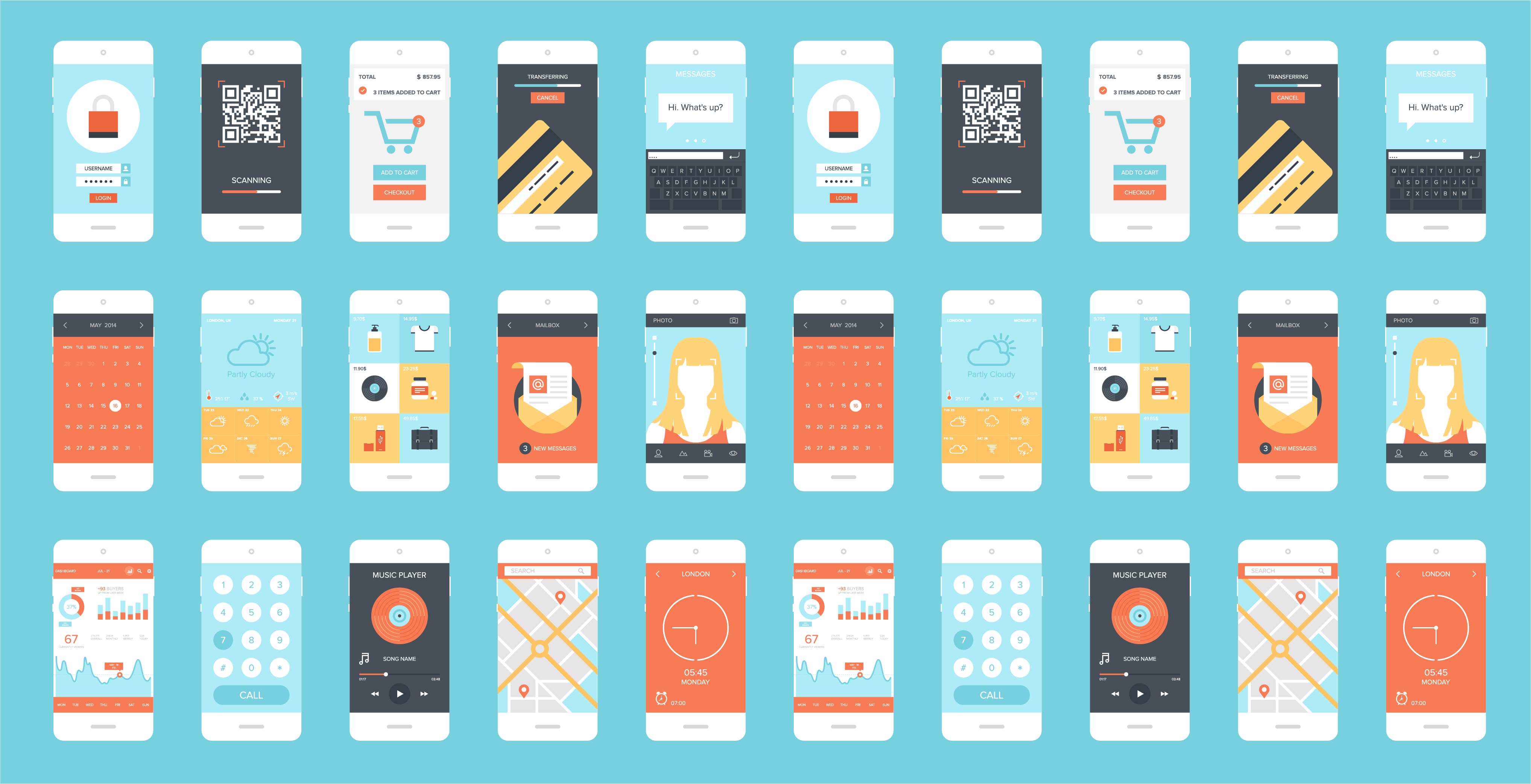Developing a successful software application requires perseverance, an excellent understanding of your customer, and the ability to provide a service that users want and need. Users require more than just a solely aesthetic application ––it needs to offer function as well as form.
A crucial part of developing and maintaining a state-of-the-art software service rests in the user experience (UX) and user interface (UI) that users require from your app. If an application isn’t designed thoughtfully and intentionally, users aren’t likely to stick around long enough to discover its value.
Let’s take a deeper look at why application and website design is crucial to the success of your business.
An Intuitive Interface
The average smartphone user only uses roughly 27 apps per month, according to a 2015 study. Out of those 27 apps, only a handful are in regular rotation. Your app faces incredibly stiff competition, and if you want it to work its way into being counted among the 27 apps per smartphone user, it’s going to have to have an incredibly intuitive interface.
A well-designed application allows users to perform the desired function quickly and intuitively through its UI. For example, the Nike+ Running app is not just attractive, but also incredibly useful. It tracks your route with GPS, but it also displays the calories burned during your run as well as your record time and average distances, all of which can be shared to “compete” with friends. It’s simple to use, and very user-friendly.
Overcomplicated apps lead customers away from their core functions or make it too difficult for them to access important features. Your UI should be clear and intuitive, helping users move through the app quickly and efficiently rather than forcing them to jump through meaningless hoops that have nothing to do with why they’re using the app.
If your application and website design are up to par, they’ll offer a similar UI and UX across devices and platforms. Why? By having a similar UX and UI, your brand will have more visibility, offering a consistent message throughout all platforms.
Recurring Satisfied Customers
In a saturated app market, consumers will quickly look to competitors if they have a poor experience with a certain app. Users rarely hesitate to uninstall an app, according to a report by Appsflyer, which looked at the uninstall rates of 500 mobile apps globally between September and October 2016. Android users uninstall at twice the rate of iOS users— Android is at 33%, while iOS reports a rate of 16%. Why? The report attributes the higher Android uninstall rate to device space. With this in mind, you must ensure that your app is worthy of taking up room in a smartphone’s overcrowded memory.
An app’s strongest marketing tool is word of mouth. An astonishing 92% of people trust recommendations from their friends or family over all other forms of advertising. It is crucial to keep your customers satisfied so that they, in turn, promote your app.
Constant analysis of your app’s performance as well as customer customer feedback are vital. You want to be sure that your consumers know that you are dedicated to maintaining an enjoyable UX. Not only will this extend the shelf life and relevance of your app, but it will set you apart from your app’s competitors. If your customers know that they’re being heard when they offer constructive criticism, they’ll feel more invested in the app, and will not only allot it space in their smartphone but recommend it to others.
A Robust Design Will Reduce Costs And Improve Sales
Investing time and resources into a high quality app design is a major timesaver. You’ll only avoid customer and technological issues later if you spend a little more time and money now.
A well-designed platform will also leverage its UX to reduce abandoned carts and customer churn rates. For instance, if your analysis shows that customers tend to drop off at certain points, your platform could offer strategically placed discounts to keep them interested. Alternatively, it could ask them to fill out a UX assessment, data that will only inform future design choices to improve engagement and sales. Offer a discount for filling out the assessment, and you could not only get the information you seek, but you could entice the user to stay engaged, too.
By integrating additional, but not mandatory, features such as chat-bots, self-help options, and live help desks—all great UX features—can also promote user engagement. These capabilities can also resolve questions or complaints quickly, freeing up your customer support team for more pressing or urgent tasks. This not only reduces the cost of dealing with individual inquiries, but also ensures a high quality of service for your users, which will increase word of mouth and potentially increase downloads.
Your application and website design is an essential component that you can’t afford to neglect. UX plays a pivotal role in how your app is perceived by users, which directly impacts its overall success.
A big contributor to your overall app UX is the functionality of your digital storefront. FastSpring provides a smooth experience as a leading full-stack digital commerce platform in the SaaS industry. Get in touch today to learn how we can be an essential partner in your success.
![[Customer Story] Why TestDome Considers FastSpring a Real Partner](https://fastspring.com/wp-content/themes/fastspring-bamboo/images/promotional/2023/FastSpring-TestDome-blog-thumbnail.jpg)








